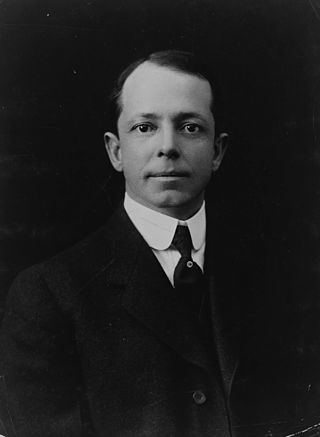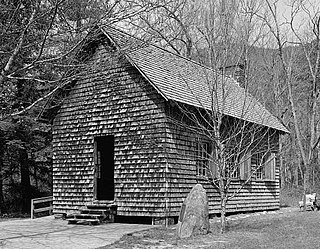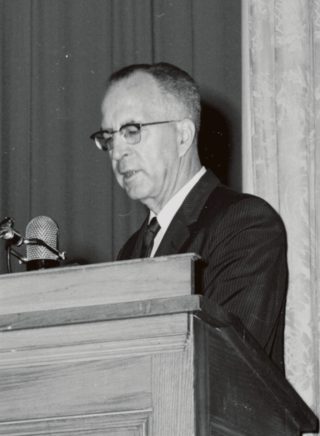
Gifford Pinchot was an American forester and politician. He served as the fourth chief of the U.S. Division of Forestry, as the first head of the United States Forest Service, and as the 28th governor of Pennsylvania. He was a member of the Republican Party for most of his life, though he joined the Progressive Party for a brief period.

A forester is a person who practises forestry, the science, art, and profession of managing forests. Foresters engage in a broad range of activities including ecological restoration and management of protected areas. Foresters manage forests to provide a variety of objectives including direct extraction of raw material, outdoor recreation, conservation, hunting and aesthetics. Emerging management practices include managing forestlands for biodiversity, carbon sequestration and air quality.

Sir Dietrich Brandis was a German-British botanist and forestry academic and administrator, who worked with the British Imperial Forestry Service in colonial India for nearly 30 years. He joined the British civil service in Burma in 1856, shortly afterwards became head of the British forestry administration in all of Burma, and served as Inspector General of Forests in India from 1864 to 1883. He returned to Europe in 1883, dividing his time between Bonn and Greater London. In retirement he dedicated himself to scholarly work, resulting in the book Indian Trees (1906), his magnum opus. Brandis is considered the father of tropical forestry and has also been described as the father of scientific forestry. In addition to his work in India, he also had a significant influence on forest management in the United States.

Bernhard Eduard Fernow was the third chief of the USDA's Division of Forestry of the United States from 1886 to 1898, preceding Gifford Pinchot in that position, and laying much of the groundwork for the establishment of the United States Forest Service in 1905. Fernow's philosophy toward forest management may be traced to Heinrich Cotta's preface to Anweisung zum Waldbau or Linnaeus' ideas on the "economy of nature." Fernow has been called the "father of professional forestry in the United States."
Articles on forestry topics include:.

Yale School of the Environment (YSE) is a professional school of Yale University. It was founded to train foresters, and now trains environmental students through four 2-year degree programs, two 10-month mid-career programs, and a 5-year PhD program. Still offering forestry instruction, the school has the oldest graduate forestry program in the United States.

Henry Solon Graves was a forest administrator in the United States. He co-founded the Yale Forest School in 1900, the oldest continuous forestry school in the United States. He was appointed Chief of the United States Forest Service in 1910 and served in this position until 1920.

Ralph Sheldon Hosmer was Hawaii's first territorial forester, a contemporary of Gifford Pinchot who was among the group of educated American foresters that organized what is now the United States Forest Service. Hosmer later joined the faculty of Cornell University as head of the department of Forestry, where he served for 28 years until his retirement.

The Journal of Forestry is the primary scholarly journal of the Society of American Foresters. It aims to advance the forestry profession by keeping professional foresters informed about developments and ideas related to the practice of forestry. The journal publishes editorials and technical content related to the management of forests and related natural resources. Articles are generally written for an audience of natural resources professionals, with topics spanning the many facets or disciplines of forestry. The Journal is currently edited by Keith A. Blatner. According to the Journal Citation Reports, its 2018 impact factor is 2.675.
Carl Alwin Schenck was a German forester and pioneering forestry educator. When Schenck came to the United States to work for George W. Vanderbilt at the Biltmore Estate, he became the third formally trained forester in the United States. He established and operated the Biltmore Forest School, the first forestry school in North America, on Vanderbilt's property.

Sir Wilhelm Philipp Daniel Schlich, also known as William Schlich, was a German-born forester who worked extensively in India for the British administration. As a professor at Cooper's Hill, he influenced colonial forestry across the British colonies. His major work was a five volume Manual of Forestry (1889-96).

The Biltmore Forest School was the first school of forestry in North America. Carl A. Schenck founded this school of "practical forestry" in 1896 on George W. Vanderbilt's Biltmore Estate near Asheville, North Carolina. The school grounds are now part of Pisgah National Forest in Transylvania County, North Carolina as the Cradle of Forestry in America, a 6500-acre historic site which features exhibits about forestry and forest conservation history.

The Society of American Foresters (SAF) is a professional organization representing the forestry industry in the United States. Its mission statement declares that it seeks to "advance the science, education, and practice of forestry; to enhance the competency of its members; to establish professional excellence; and, to use the knowledge, skills and conservation ethic of the profession to ensure the continued health and use of forest ecosystems and the present and future availability of forest resources to benefit society". Its headquarters are located in Washington, D.C.
Thomas Harvey Gill was a leader in American forestry, adventurer, writer of popular fiction and editor of an academic journal.
The New York State College of Forestry at Cornell was a statutory college established in 1898 at Cornell University to teach scientific forestry. The first four-year college of forestry in the country, it was defunded by the State of New York in 1903, over controversies involving the college's forestry practices in the Adirondacks. Forestry studies continued at Cornell even after the college's closing.
The New York State College of Forestry, the first professional school of forestry in North America, opened its doors at Cornell University, in Ithaca, New York, in the autumn of 1898., It was advocated for by Governor Frank S. Black, but after just a few years of operation, it was defunded in 1903, by Governor Benjamin B. Odell in response to public outcry over the College's controversial forestry practices in the Adirondacks.

William Buckhout Greeley was the third chief of the United States Forest Service, a position he held from 1920 to 1928. During World War I he commanded U.S. Army forest engineers in France, providing Allied forces with the timber necessary for the war effort.

Robert Young Stuart (1883–1933) was the fourth Chief of the United States Forest Service (USFS) of the Department of Agriculture, and was appointed on May 1, 1928, succeeding William B. Greeley. He served as Chief until his death on October 23, 1933.

Edward P. Cliff served as the ninth Chief of the United States Forest Service (USFS) of the Department of Agriculture, from March 17, 1962 to April 29, 1972.

Frederick Erskine Olmsted, also known as Fritz Olmsted, was an American forester and one of the founders of American forestry. Through his work with the United States Forest Service, Olmsted helped establish the national forest system in the United States and helped train the next generation of Forest Service agents and college professors. He was instrumental in the creation of at least twenty national forests in California and Alaska including the Muir Woods National Monument and Tongass National Forest. He also wrote the Use of National Forest Resources, a foundational Forest Service manual that laid the groundwork for the nation's enduring forest management system, elements of which remain in use today.
















